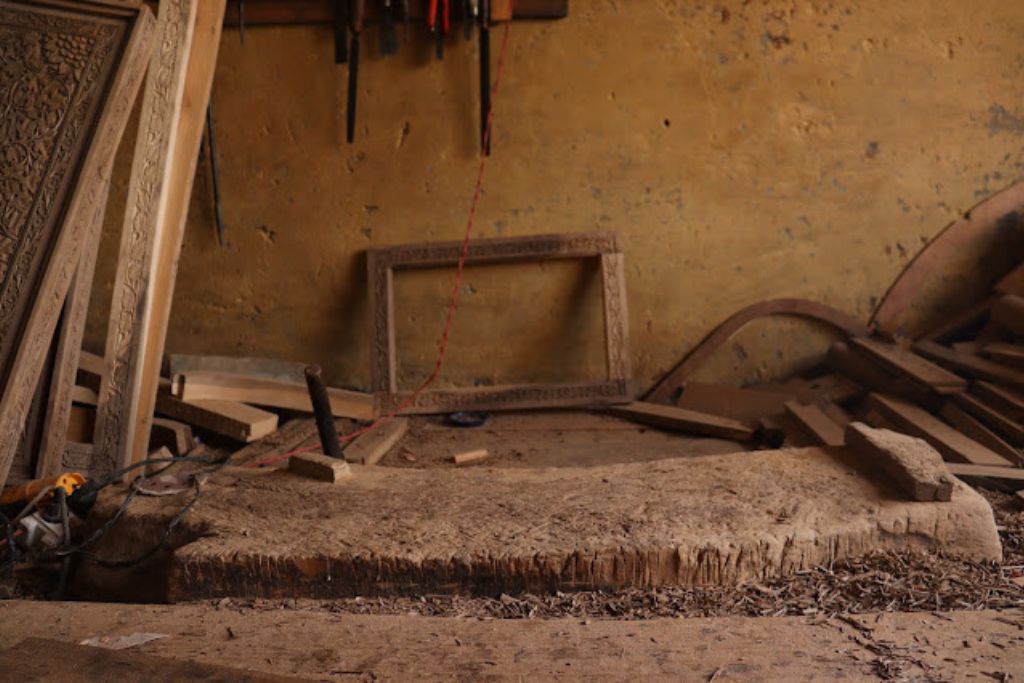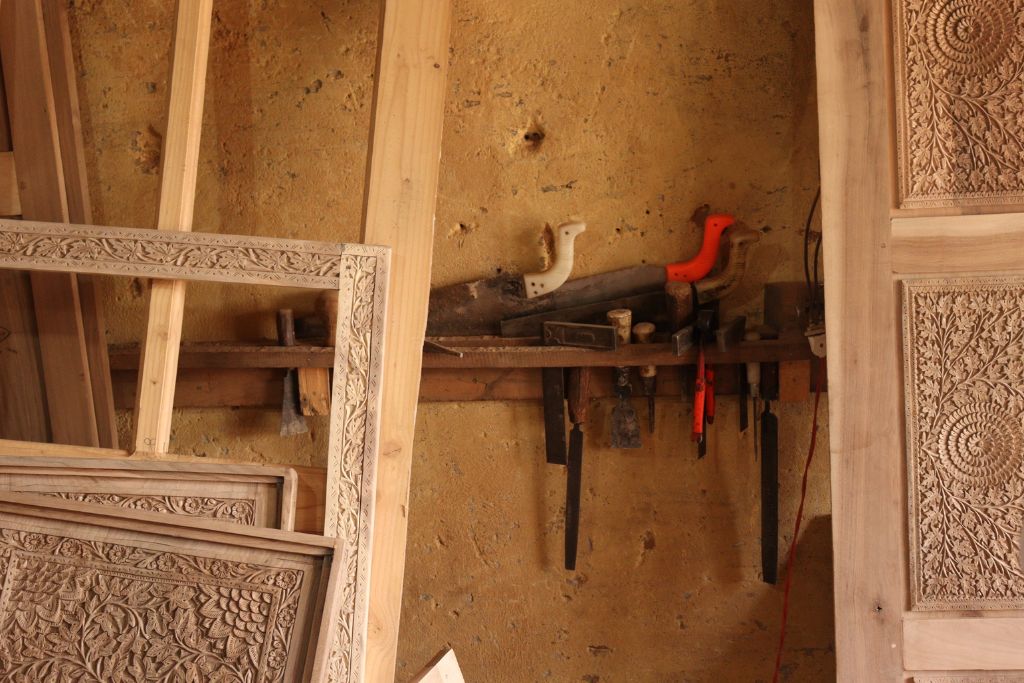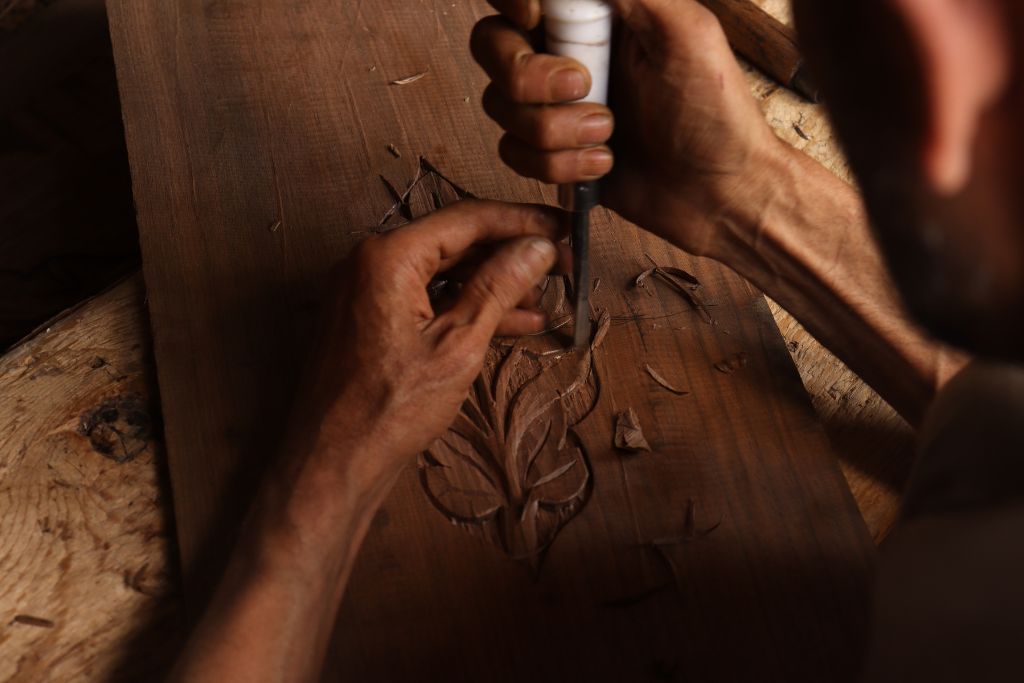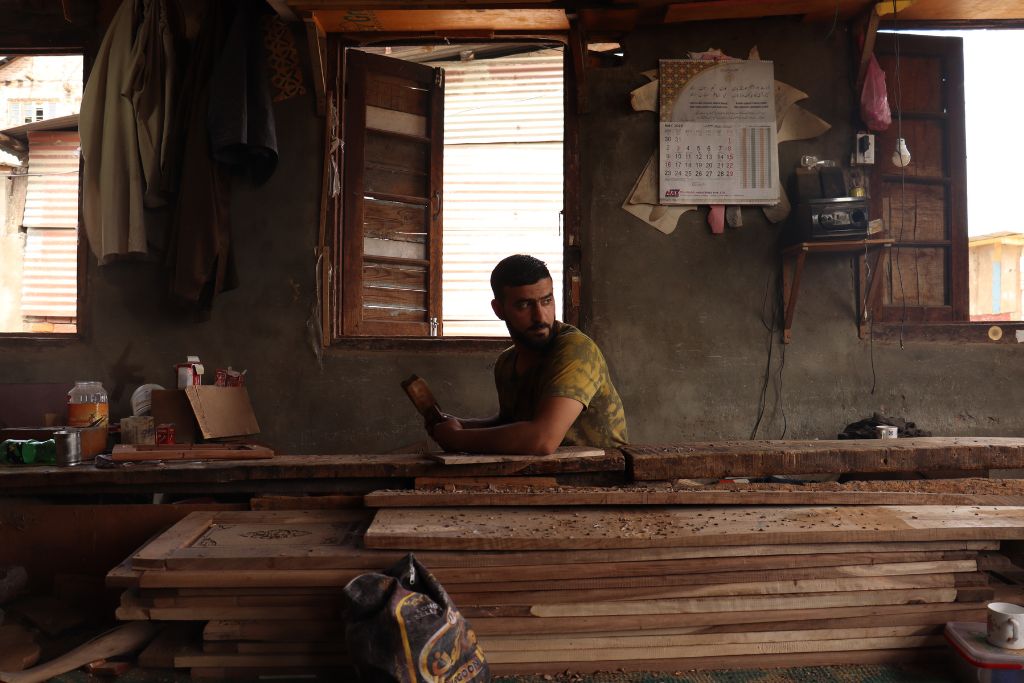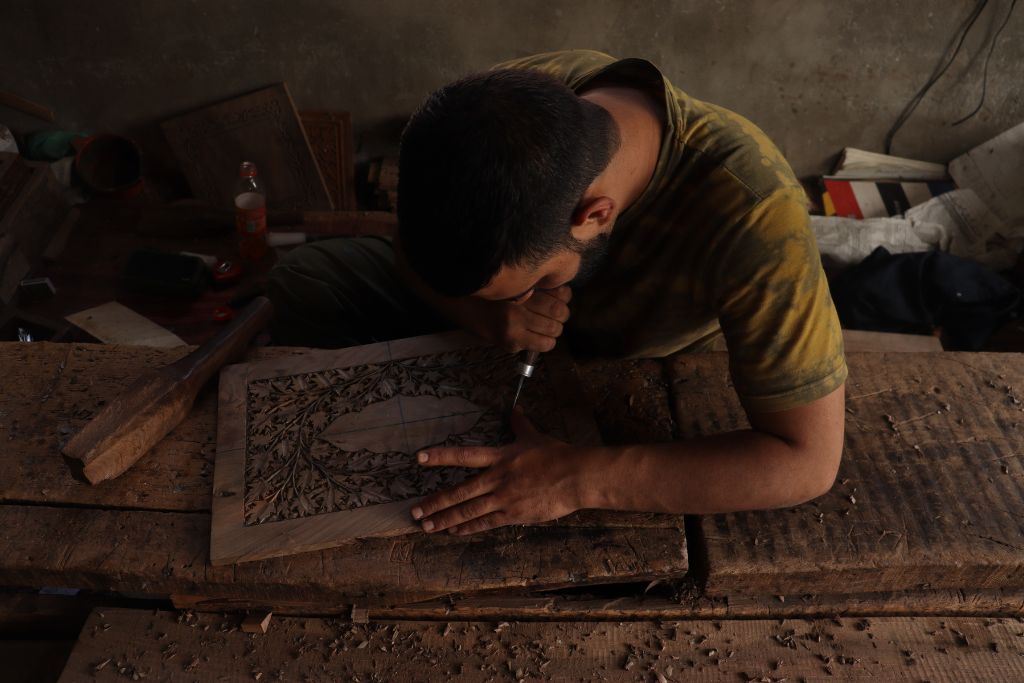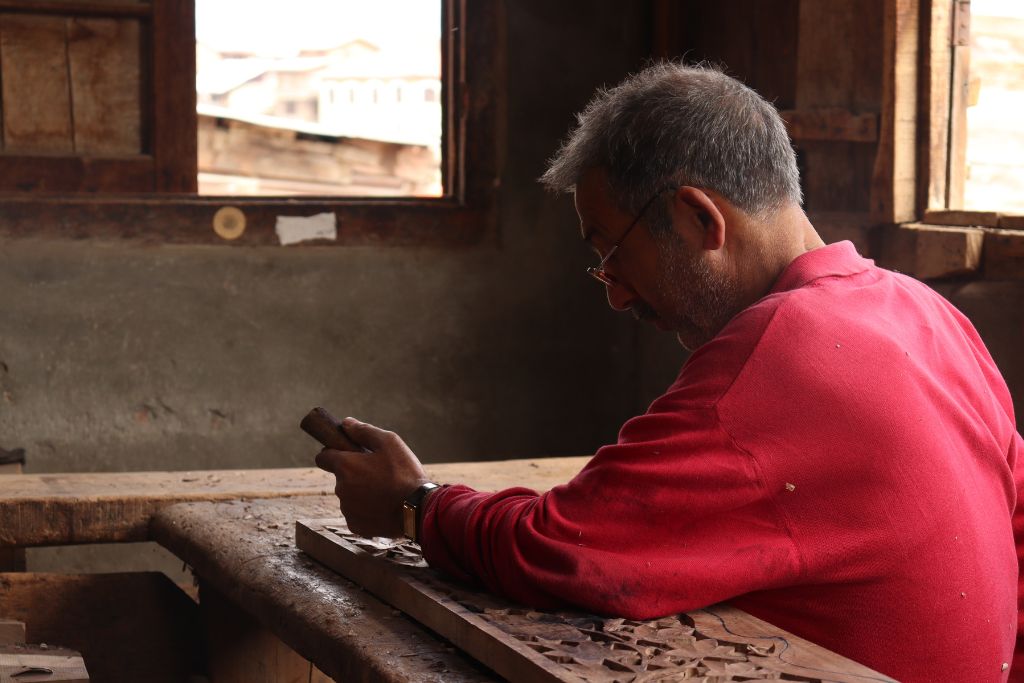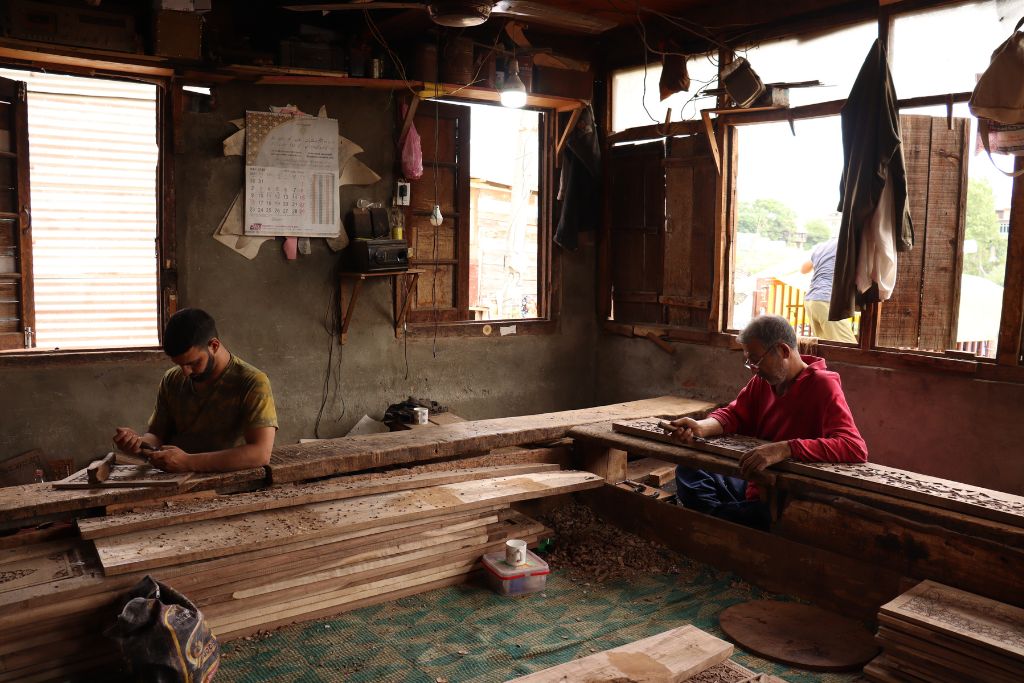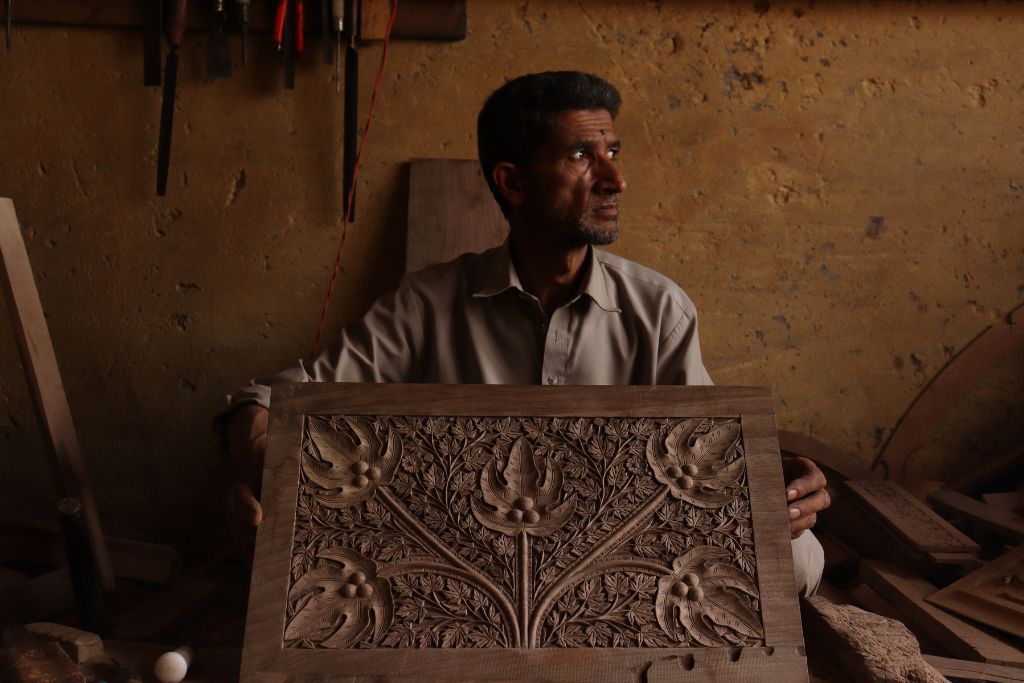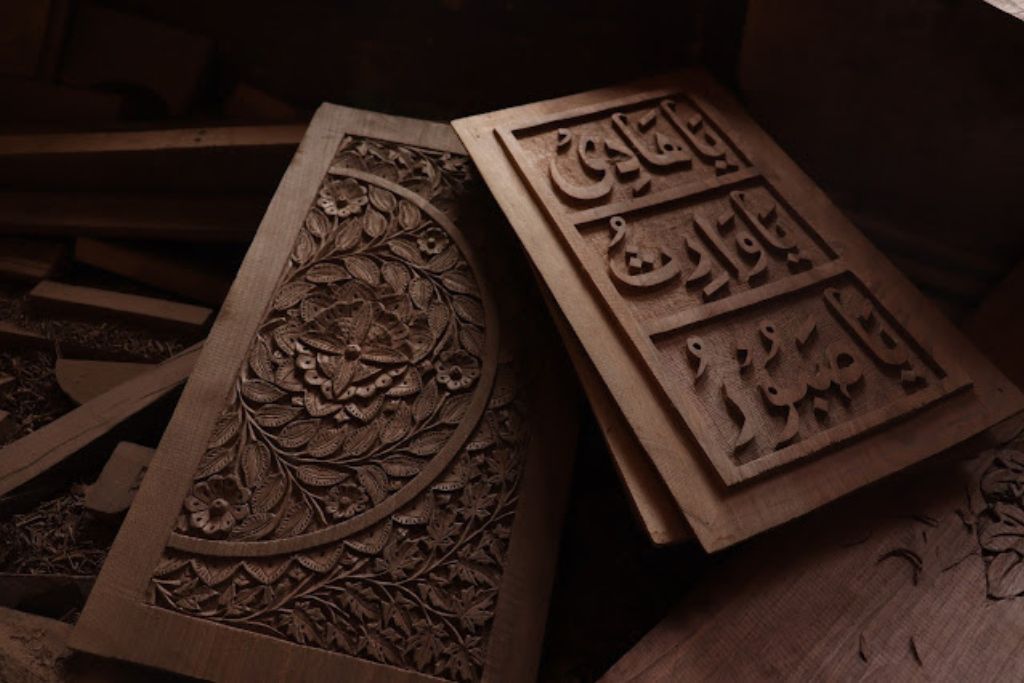
Kashmir’s walnut wonders
In the Haft Yarbal area of Safakadal, located just 3.6 km from Srinagar's bustling Lal Chowk, a group of artisans breathe life into wood with their masterful hands. The magic of wood carving unfolds as delicate instruments shape intricate designs to create motifs on furniture and home decor pieces.
The workspace of Mohammad Ismail is home to an assortment of tools and wood pieces, using which he crafts his creations. Step into the place and the scent of walnut wood greets you. Ismail transitioned from selling milk to carving wood to support his family. He has been working in the workshop nestled on the banks of the Jhelum River in Safakadal for 40 years now, creating motifs on sofas, tables, dining sets and other furniture pieces in Kashmir.
The woodcarvers work with several delicate instruments, each used for specific engraving of intricate designs into walnut wood. Known as doonhachi kaem in the local language, this practice is believed to have originated in central Asia and was brought to Kashmir 600-700 years ago by the revered saint Shah Hamdan RA. The art form flourished during the reign (1420-1470) of Zain-ul-Abidin, the eighth sultan of the Shah Mir dynasty of Kashmir.
Also Read | Deaf-mute Kashmiri woodcarver’s work leaves world speechless
Waseem Ahmad carries forward the legacy inherited from his forefathers to work with long walnut planks and transform them into works of art. The rich, natural grain of the walnut wood provides a perfect backdrop for the carvings to stand out. For the past nine years, Bhat has honed his craft in his father’s workshop.
Also Read | Wakhoo: Journey from a sleepy village of timber traders to ‘Pencil Village’ of India
While the market for carved wooden products has witnessed a decline since the 1990s, Mohammad Ismail notes that local demand still prevails. The younger generation shows less interest in this occupation, deterred by its complexity. Nonetheless, artisans like Ismail continue to adapt their designs to cater to the changing trends and customer preferences. Among Ismail’s most sought-after creations are engraved walnut pieces featuring the 99 names of Allah that find a place in mosques and shrines across the Valley.
Also Read | Kashmir’s cricket bats go global, give English willow a run for its money
Wood sheets are sourced from mature walnut trees. The tree is locally known as doon kul. The popular motifs engraved on the wood are chinar leaves, flowers and dragons. Artisans say that recent challenges, such as the clampdown following the abrogation of Article 370 and subsequent COVID-19 lockdowns, have taken a toll on the market for their products.
Also Read | The ‘faere’ tale of Kashmir’s smoked fish dish
Ghulam Hassan Mir has over five decades of experience in carving walnut wood. He reveals that the number of orders received per month has dwindled to a mere 5-6, showcasing a significant decline over the last two decades. Tourists, once captivated by this art, now show diminished interest in buying these artefacts.
Also Read | Kashmiri couture trends globally
Wood carving is an integral part of the region’s heritage. Machines play a minimal role in this practice, contributing only around 10 per cent to the final product, while the remaining work is done by hand. Skilled artisans can earn Rs 500 to Rs 700 per day.
Also Read | A dose of dandelion soothes Kashmir’s palate and health
The craftsmen realise the need for innovation and diversity in their designs. Another concern is the use of wood other than walnut by many artisans, which tarnishes the reputation of this traditional craft among customers. They want the government to take necessary steps to curb this malpractice, including providing training to aspiring woodworkers.
Also Read | Mandala art and Kashmir’s shikara sorceress
The lead image at the top shows carved planks of walnut wood.
Photographs and text by Babar Rather, a Kashmir-based journalist.
